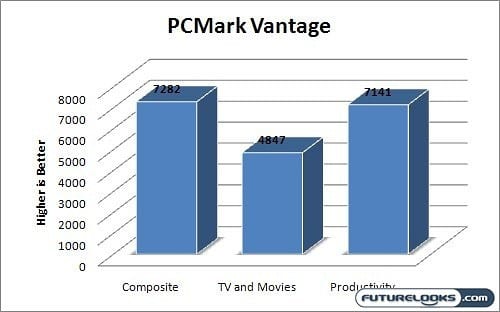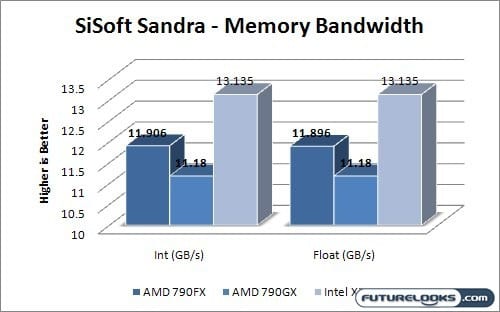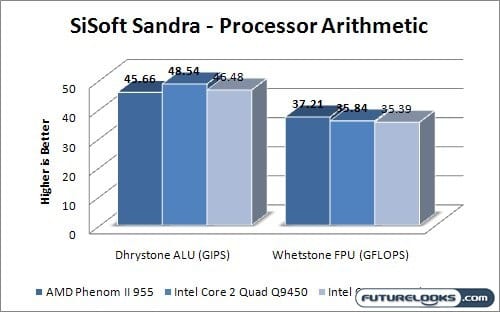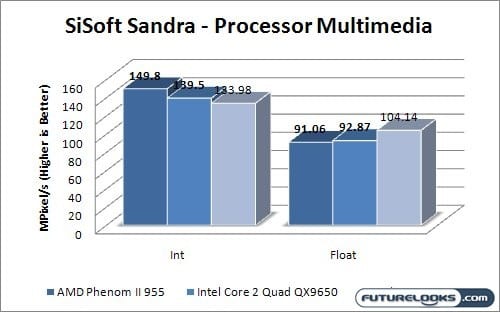Test System Setup
A careful selection of components were used to really put the board through its paces. To test the MA790FXT-UD5P, we used the following components to construct our own “Drgaon: Reloaded” platform:
- AMD Phenom II X4 955 Black Edition CPU
- Corsair XMS3 DHX 4GB DDR3-1600 Dual Channel Memory Kit
- Gigabyte Radeon HD 4890 1GB PCIe Video Card
- Western Digital VelociRaptor 300GB 10000rpm SATA2 Hard Drive
- HighSpeed PC Top Deck Tech Station
- Lian Li MAXIMA Force Extreme PS-A650GB 650W Power Supply
We ran the board through several synthetic and real world tests, gauging performance in areas like CPU performance, memory, I/O, and gaming. The results we gleaned from these tests will be used for comparison in some other reviews, but I’ll let you check out the baseline results in the next couple of pages. Let’s begin!
Synthetic Benchmarks
We start our round of benchmarks with the usual suite of synthetic tests. First up is PCMark Vantage, which is less synthetic than most synthetic tests. It emulates modern system tasks to produce a set of measurable results.

The results we gathered show a strong overall performance, with emphasis on desktop and productivity performance. TV and Movies, which encompasses both playback and rendering, was a little lower but well within the range for performance of this class of system. Moving right along, we decided to follow the decent showing in PCMark Vantage with a run through of the fully synthetic SiSoftware Sandra suite of benchmarks. These tests take a look at the raw speed of a particular component, and can be a good way of measuring how another component affects the target of the particular test.
The first test used was the memory bandwidth benchmark, which was selected due to it’s relevance to motherboard performance. Now you might be wondering how, as the memory controller is on the CPU and should only be affected by CPU performance. Well the Northbridge chipset still does play a role in this interface.

We used the built in database results within Sandra to compare against how our test board performed, choosing available parts that best compare against our test system. The AMD 790FX chipset found on the MA790FXT-UD5P is definitely at the top of the heap within the realm of AMD, besting the very similar AMD 790GX chipset which was the staple of the Spider Platform. However both chipsets fall before the Intel silicon, with the latter posting a 15% performance increase over the former.

Though the memory performance benchmarks did result in some gaps between the two manufacturers, testing the raw performance of the CPU as it resides on this motherboard pulled in some closer numbers. The AMD processor used in our test came very close to two very powerful Intel processors, one closer to it’s price range and one clearly price out of the ballpark. This is a good thing for the AMD platform, and I hope it continues in our testing.

Though this isn’t exactly what I had hoped for with that last sentence, the trend does continue into testing CPU multimedia performance. Due to a gap in database results in the Sandra database, we had to choose other CPUs so we apologize about the switch up. Instead, we decided to pick Intel’s top parts for a quick comparison.
Not surprisingly, the Core i7 handily beats everything here in floating point performance, but the Intel Core 2 Quad QX9650 and AMD Phenom II 955 shown here are quite close to each other in terms of performance. However, the AMD part is still quite a bit cheaper.
